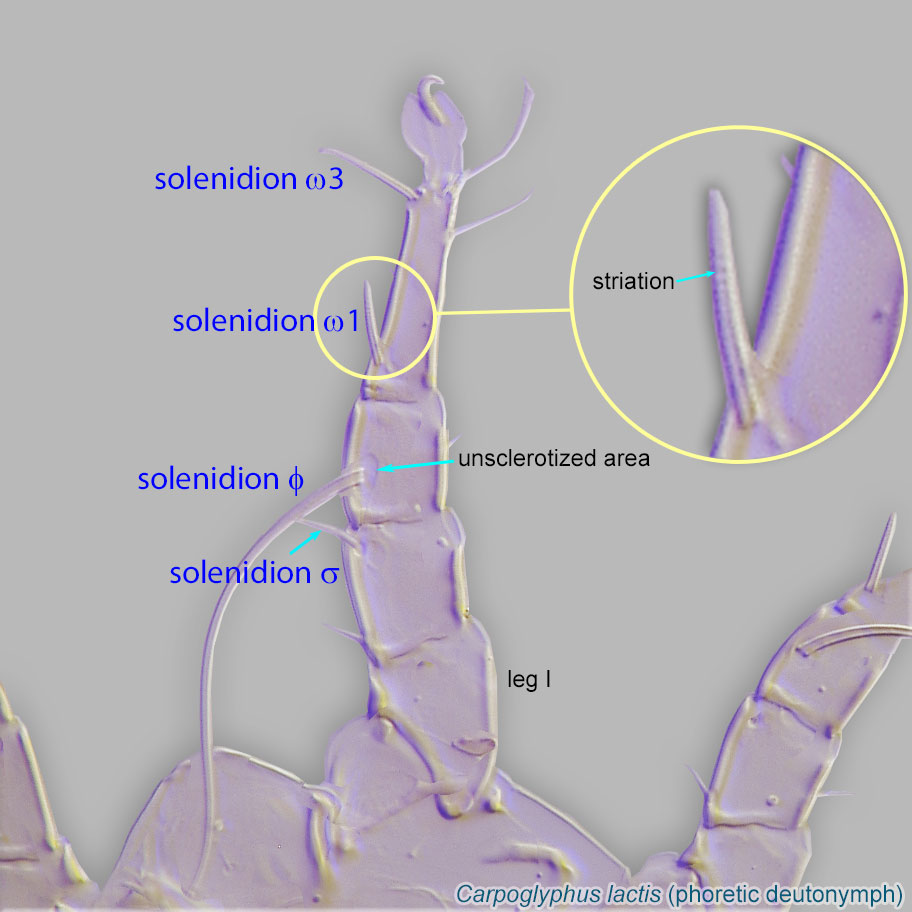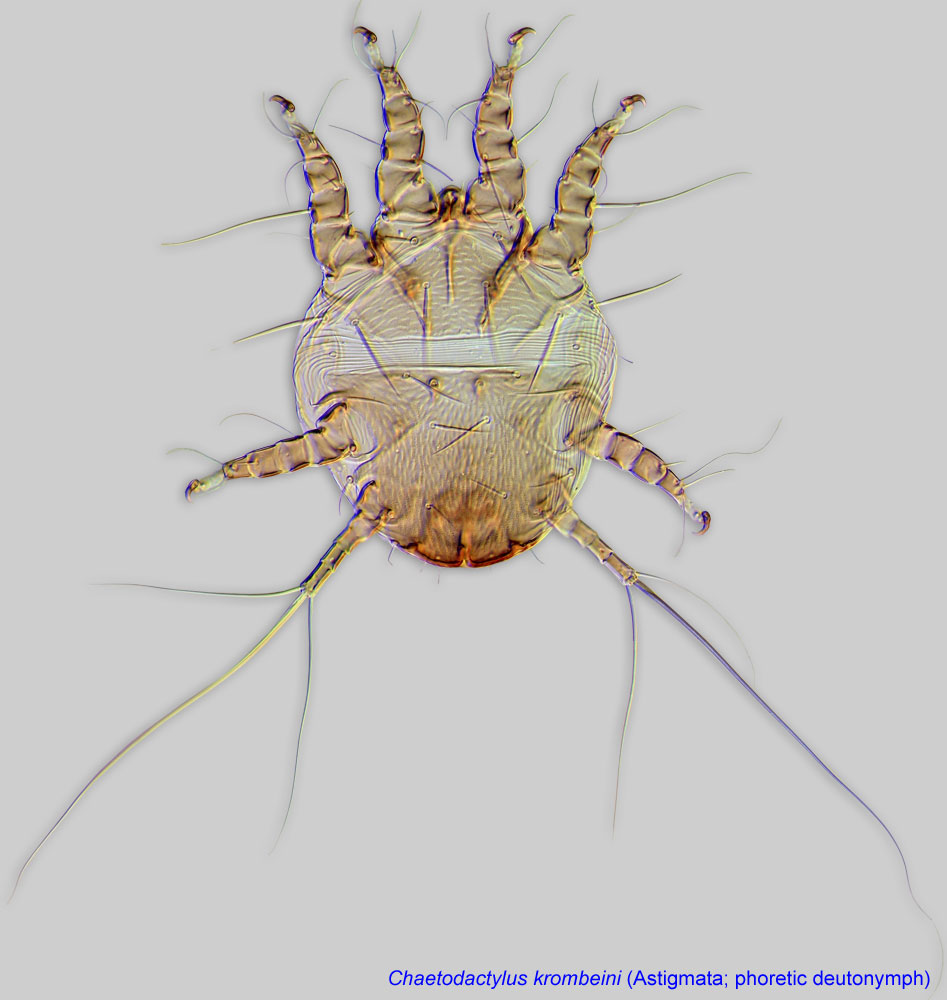may be beneficial; hosts have acarinariaacarinarium:
A specialized morphological structure that facilitates retention of mites on the body of an organism, typically a bee or wasp.
to transport mites, but biology not well known
Achaetodactylus Fain, 1981Fain, 1981:
Fain, A. 1981. A revision of the phoretic deutonymphs (hypopi) of the genus Sennertia Oudemans, 1905 (Acari, Astigmata, Chaetodactylidae). Systematic Parasitology.3: 145-183.
Superorder Acariformes » Order Sarcoptiformes » Suborder Oribatida » Infraorder Desmonomata » Hyporder Astigmata » Family Chaetodactylidae » Genus Achaetodactylus
Chaetodactylus leleupi Fain, 1974
Ochaetodactylus Fain, 1971
Phoretic phoretic:
Pertaining to phoresy; using another organism (i.e., a host) for dispersal to new habitats. Phoresy can be distinguished from parasitism because feeding typically does not occur during phoresy.
deutonymph: Free palpi, gnathosomal solenidiasolenidion:
Thin-walled, terminally rounded or pointed filiform or peglike structure that is not birefringent in polarized light (unlike common setae in Acariformes). Often appears striated because of its internal structure. Found on the palpal tarsus on the gnathosoma and may also occur on the tarsus and tibia, less frequently on the genu, and occasionally on the femur of legs I-IV. In Acariformes, leg solenidia often arise from unsclerotized areas.
 , and setae absent (Fig 2).
, and setae absent (Fig 2).
A dichotomous key for phoreticphoretic:
Pertaining to phoresy; using another organism (i.e., a host) for dispersal to new habitats. Phoresy can be distinguished from parasitism because feeding typically does not occur during phoresy.
deutonymphsdeutonymph:
Ontogenetic stage between protonymph and tritonymph (or adult, if tritonymph is absent). See <a href="index.cfm?pageID=1720">Life stages page</a> for more details. is available at the bee-associated mites website.
is available at the bee-associated mites website.
Afrotropical region
small carpenter bees (Ceratina)
permanentpermanent:
associated exclusively with bees or their close relative, wasps; cannot live without these hosts
 disperse in acarinariaacarinarium:
disperse in acarinariaacarinarium: